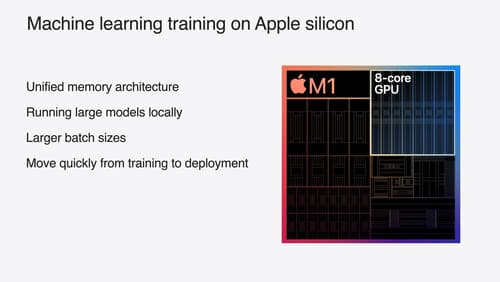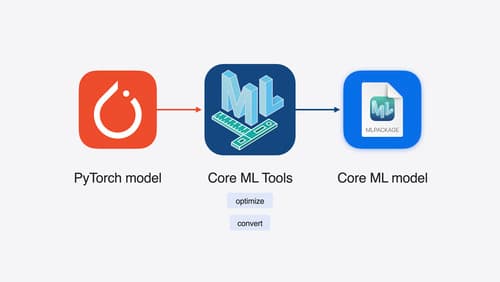what's the most pressing thing to learn about
Asked on 2024-07-30
1 search
The most pressing thing to learn about from the content presented at WWDC is the advancements in machine learning and AI, particularly how to efficiently deploy and optimize models on Apple devices. Here are some key points:
-
Adapters and Model Compression:
- Apple introduced a new technique called adapters, which are small collections of model weights that can be dynamically loaded and swapped to specialize the foundation model for specific tasks. This is an efficient way to scale the capabilities of the foundation model (Platforms State of the Union).
- They also leveraged state-of-the-art quantization techniques to compress models, reducing a 16-bit parameter model to less than four bits per parameter while maintaining quality (Platforms State of the Union).
-
Training and Optimization on Apple Silicon:
- Apple Silicon's hardware acceleration and unified memory are highlighted as key advantages for training models using frameworks like PyTorch, TensorFlow, JAX, or MLX (Platforms State of the Union).
- The session "Bring your machine learning and AI models to Apple silicon" covers model compression, stateful model support, and optimization for transformer architecture (Bring your machine learning and AI models to Apple silicon).
-
Core ML and MLTensor:
- Core ML provides tools for integrating and running models efficiently on Apple devices. MLTensor is introduced as a new type in Core ML that simplifies the support for computation outside the model, which is often necessary for generative AI (Deploy machine learning and AI models on-device with Core ML).
-
Optimizing 3D Assets for Spatial Computing:
- For those working with 3D content, optimizing assets for spatial computing on Apple Vision Pro is crucial. This includes keeping polygon counts low, optimizing texture memory, and using efficient materials and shaders (Optimize your 3D assets for spatial computing).
Relevant Sessions
- Platforms State of the Union
- Bring your machine learning and AI models to Apple silicon
- Deploy machine learning and AI models on-device with Core ML
- Optimize your 3D assets for spatial computing
These sessions provide a comprehensive overview of the latest advancements and best practices for leveraging machine learning, AI, and 3D content optimization on Apple platforms.

Train your machine learning and AI models on Apple GPUs
Learn how to train your models on Apple Silicon with Metal for PyTorch, JAX and TensorFlow. Take advantage of new attention operations and quantization support for improved transformer model performance on your devices.

Optimize your 3D assets for spatial computing
Dive into an end-to-end workflow for optimized 3D asset creation. Discover best practices for optimizing meshes, materials, and textures in your digital content creation tool. Learn how to harness shader graph, baking, and material instances to enhance your 3D scene while optimizing performance. Take advantage of native tools to work more effectively with your assets and improve your app’s performance.

Bring your machine learning and AI models to Apple silicon
Learn how to optimize your machine learning and AI models to leverage the power of Apple silicon. Review model conversion workflows to prepare your models for on-device deployment. Understand model compression techniques that are compatible with Apple silicon, and at what stages in your model deployment workflow you can apply them. We’ll also explore the tradeoffs between storage size, latency, power usage and accuracy.
